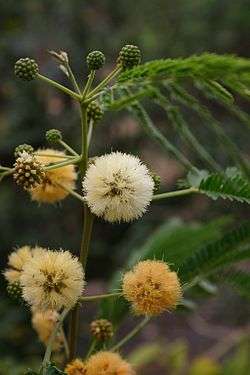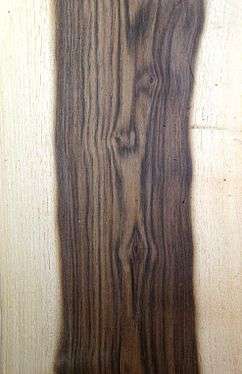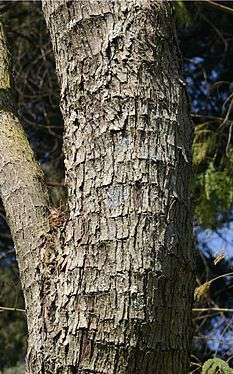Albizia odoratissima
| Albizia odoratissima | |
|---|---|
 | |
| A. odoratissima from "Plants of the coast of Coromandel" by William Roxburgh | |
| Scientific classification | |
| Kingdom: | Plantae |
| (unranked): | Angiosperms |
| (unranked): | Eudicots |
| (unranked): | Rosids |
| Order: | Fabales |
| Family: | Fabaceae |
| Genus: | Albizia |
| Species: | A. odoratissima |
| Binomial name | |
| Albizia odoratissima (L.f.) Benth. | |
| Synonyms | |
| |
Albizia odoratissima (L.f.) Benth., a member of the Fabaceae family, is a fast-growing, deciduous tree reaching 15 to 25 m (49 to 82 ft) in height, a diameter of 120–150 cm (47–59 in), and native to large parts of India (where it is known as கருவாகை, 'Kali Siris' or 'Black Siris'), Bangladesh, Bhutan, Nepal, Myanmar, Laos, Thailand, Vietnam, Sri Lanka (where it is known as 'Ceylon Rosewood') and China.[1] It is one of the top nitrogen-fixing trees.
The species' wide range of habitat, usefulness and rapid growth of about a metre in height annually, has led to an extensive distribution in the tropics and occasionally in the temperate zones, despite young plants' being susceptible to frost. It has become naturalised over large swathes of Tropical Africa, extending from Tanzania down the east coast through Kenya, Malawi and Zimbabwe as far south as Mozambique, and is grown in Johannesburg, South Africa. It has also become feral in Central America and Florida in the United States. It will tolerate a wide range of soil types, but does best on moist, well-drained, loamy soils, and can occur from sea level to about 1,800 metres (5,906 ft), with an annual rainfall between 600 and 3000 mm.
Albizia odoratissima has an attractive dark brown to black heartwood, often striped, durable and dense. It seasons with few problems, and works and polishes well, finding applications in structural timber, furniture and agricultural implements. In Bangladesh large areas of tea and coffee plantations are shaded by this species, while the foliage makes good cattle fodder. The species is liable to genetic degradation due to the 'extensive felling of phenotypically superior trees for commercial purposes.'[2]
The fragrant flowers are white withering to a pale orange, appearing in large terminal clusters. Mature pods are reddish-brown, thin and flat, from 13 to 20 cm long and 2 to 4 cm wide, and contain 8 to 12 reddish-brown seeds, each weighing about 0.05 gram. The bark is dark grey with horizontal lenticels. Leaves are bipinnately compound, downy, with 3-9 pairs of pinnae and 10-30 pairs of pinnules.[3] Seeds germinate readily with a high viability, but are often damaged by Bruchidius beetles of the Chrysomelidae family. [4]
Gallery
References
- ↑ "Albizia odoratissima (L.f.) Benth. by M.K. HOSSAIN and T.K. NATH, Institute of Forestry and Environmental Sciences, Chittagong University, Bangladesh
- ↑ "In Vitro Propagation of Albizia odoratissima"
- ↑ Agroforestry
- ↑ http://www.efloras.org/florataxon.aspx?flora_id=610&taxon_id=200011880
External links
| Wikimedia Commons has media related to Albizia odoratissima. |



